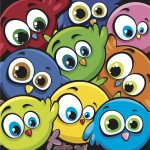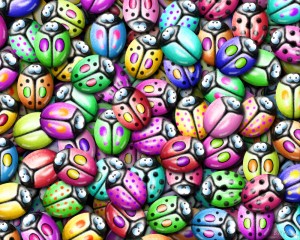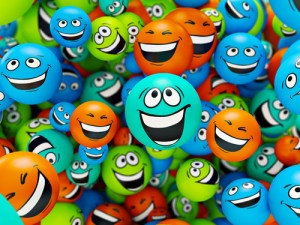302. Word Counts: Planning the length of your story
Counting Up The Words
Getting the appropriate story length is essential to getting published. Editors have very specific guidelines for the types of stories they publish and those types all have specific Word Count ranges.
Industry Standard Children’s Categories
 Published children’s books are divided into three main categories: Young Adult, Middle Grade, and Picture Books. Some people consider them genres, and some people insist that they are only subcategories of children’s books which may or not be a genre, depending upon who is doing the delineating. They are, however, categorical delineations that are fairly well established. I will cover a few more delineations further below, but you should know these three if you want to publish in the children’s market.
Published children’s books are divided into three main categories: Young Adult, Middle Grade, and Picture Books. Some people consider them genres, and some people insist that they are only subcategories of children’s books which may or not be a genre, depending upon who is doing the delineating. They are, however, categorical delineations that are fairly well established. I will cover a few more delineations further below, but you should know these three if you want to publish in the children’s market.
YOUNG ADULT
Young Adult books are geared for kids approximately 13-19. While they are directed at teens, their content and language complexity is generally at the level of adult writing. It is the Themes and subject matter that are different. These stories focus on ideas and issues relevant to teens, particularly romance and even sex. While certainly not every Young Adult novel features them, drug use, drinking, fighting, and anti-social behavior are standard in these novels today. They almost universally feature a teen protagonist.
MIDDLE GRADE
Middle Grade Books are written for kids approximately 8-12. The language has to be modified to complement their lexile ranges, but it is not acceptable to write in a way that is pedantic. Themes should be relevant: adventure is essential, parents are generally absent, romance is light if present, happy endings are the norm, and the protagonist is always in the age range of the readers or slightly older.
PICTURE BOOKS
YPicture Books are, obviously, full of pictures. They cater to kids ages 3-8 who generally cannot yet read, or are just learning to read. Themes are relevant to the age range and happy endings are mandatory. They often feature animal protagonists, but generally NOT grown up protagonists. They tend to have common and universal themes that are recognizable from generation to generation.
 Because this site focuses on picture books, I have further broken down the category of picture books into subcategories. There is no one person who delineates these categories; they are generated by the aggregate publishing industry, a complex and reified entity that cannot be simplified by categorical definitions. Individual publishers can purposefully target specific markets that they want to capture, and every time any publisher successfully targets a previously untapped market, other publishers follow. That process creates a new market and somehow that market gets a name. Children’s book categories are not static and they are not written in stone; they are constantly changing with our changing society and new innovations by publishers and writers. Be aware that there is no one “true” or accurate list of children’s book categories, but this list will give you an idea of the basic boundaries.
Because this site focuses on picture books, I have further broken down the category of picture books into subcategories. There is no one person who delineates these categories; they are generated by the aggregate publishing industry, a complex and reified entity that cannot be simplified by categorical definitions. Individual publishers can purposefully target specific markets that they want to capture, and every time any publisher successfully targets a previously untapped market, other publishers follow. That process creates a new market and somehow that market gets a name. Children’s book categories are not static and they are not written in stone; they are constantly changing with our changing society and new innovations by publishers and writers. Be aware that there is no one “true” or accurate list of children’s book categories, but this list will give you an idea of the basic boundaries.
TRADE PICTURE BOOKS
- Trade Picture Books are the standard picture books that you see in bookstores.
- Target age: 3-8
- Target Word Count: 400-800
YOUNG PICTURE BOOKS
- Young Picture Books are trade picture books that cater to very young children. They are often counting books, or novelty books, or bedtime books. They are very often written in rhyme
- Target Age: 2-5
- Target Word Count: 200-400
PICTURE STORY BOOKS
- Picture Story Books are trade picture books that cater to older kids. See section 301 for a further definition of this market.
- Target Age: 6-10
- Target Word Count 1000-3000
CHAPTER BOOKS
- Chapter Books are transitionary books that are broken down into short simple chapters to prepare young children for reading novels. They contain only a few illustrations and tend to be written in series that repeat a simple plot format. These books are almost never written in rhyme.
- Target Age: 6-10
- Word Count: 1000-3500
NOVELTY BOOKS
- Novelty Books are books that generally have some feature beyond just a story: pop-up books, puzzle books, scratch-and-sniff books, books with pulltabs and tactile insets, etc. These are generally geared to very young children, but not always; sometimes the extra feature is complicated like making origami, or paper dolls.
- Target Age: 2-10
- Word Count: 0-1500
Okay, so you have a great theme, and you’re ready to write your story. See sections 303 and 304 to determine what type of story you want to write. But first, first, first, first, first, know that your story should be about 400-700 words long. Yes, that is all. Remember that picture storybooks are longer, but that is a much smaller market and should be geared to older kids. Also remember that books geared to the youngest listeners (2-5) should never be longer than 500 words. I suggest shooting for about 500, regardless of target age. Trade picture books should NOT (I repeat SHOULD NOT) go beyond 1000 words. And they can only be that long if the book is amazing and can’t be shortened. Some publishers won’t accept submissions beyond 500 words, so I like to think of 500 as a goal. Laura Murray’s Gingerbread Man: Loose in the School is one of the longest picture books I’ve seen published in the last ten years and it’s only about 900 words.
you want to write. But first, first, first, first, first, know that your story should be about 400-700 words long. Yes, that is all. Remember that picture storybooks are longer, but that is a much smaller market and should be geared to older kids. Also remember that books geared to the youngest listeners (2-5) should never be longer than 500 words. I suggest shooting for about 500, regardless of target age. Trade picture books should NOT (I repeat SHOULD NOT) go beyond 1000 words. And they can only be that long if the book is amazing and can’t be shortened. Some publishers won’t accept submissions beyond 500 words, so I like to think of 500 as a goal. Laura Murray’s Gingerbread Man: Loose in the School is one of the longest picture books I’ve seen published in the last ten years and it’s only about 900 words.
